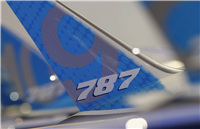Ethnic equality, unity and development in Xinjiang
Updated: 2015-09-25 06:33
(China Daily)
|
||||||||
On August 22, 1952, in accordance with the relevant provisions of the Program of the People's Republic of China for Implementing Ethnic Regional Autonomy, the second session of the first people's congress of all ethnic groups and walks of life was held in Xinjiang Province, passing the Resolution on Executing the Program of the People's Republic of China for Implementing Ethnic Regional Autonomy and forming a preparatory committee for exercising ethnic regional autonomy in Xinjiang Province on September 10.
In its official written reply on December 22, 1953, the Government Administrative Council of the Central People's Government approved the Measures for Exercising Ethnic Regional Autonomy in Xinjiang Province, initiating the preparatory work for establishing autonomous areas in Xinjiang in an orderly fashion. By 1954, with the approval of the central government, Xinjiang had completed the preparations for the establishment of autonomous areas at or below the prefecture level, establishing five autonomous prefectures, i.e., Bayingolin Mongolian, Bortala Mongolian, Kizilsu Kirgiz, Changji Hui and Ili Kazak, six autonomous counties, i.e., Yanqi Hui, Qapqal Xibe, Mori Kazak, Hoboksar Mongolian, Tashkurghan Tajik and Barkol Kazak.
The establishment of these autonomous prefectures and counties laid the foundation for the establishment of the Xinjiang Uygur Autonomous Region. In accordance with the Program of the People's Republic of China for Practicing Ethnic Regional Autonomy, the CPC Xinjiang Bureau made proactive and prudent preparations for establishing the autonomous region. The 21st meeting of the Standing Committee of the First National People's Congress passed on September 13, 1955 the resolution to establish the Xinjiang Uygur Autonomous Region to replace the former Xinjiang Province, with the former areas under the jurisdiction of the Xinjiang Province being put under the jurisdiction of the newly established autonomous region.
In September 20-30, 1955, the second session of the First People's Congress of Xinjiang Province was convened in Urumqi. The meeting approved the Report on Preparatory Work for the Establishment of the Xinjiang Uygur Autonomous Region along with some other instruments, and elected a 41-member People's Committee of Xinjiang Uygur Autonomous Region, with Seypidin Ezizi (Uygur) as chair, and Gao Jinchun (Han), Memetmin Iminof (Uygur) and Patihan Sugurbayev (Kazak) as vice chairs. On October 1, 1955, the Xinjiang Uygur Autonomous Region was officially founded.
The establishment of the Xinjiang Uygur Autonomous Region marked the full implementation of the system of ethnic regional autonomy in Xinjiang. Under the leadership and care of the central government and with the strong support and help from other provinces, autonomous regions and municipalities, the people of the various ethnic groups in Xinjiang plunged into the construction of Xinjiang in a massive scale.
In 1984, the state promulgated and put into effect the Law of the People's Republic of China on Ethnic Regional Autonomy, establishing ethnic regional autonomy as a basic political system of the state, thereby providing a powerful legal basis for all ethnic peoples in Xinjiang to fully exercise their right of autonomy based on the principle of safeguarding national unification.
In May 2010 and May 2014, the central government held two meetings to specially discuss work in relation to Xinjiang, emphasizing the importance of upholding and improving the system of ethnic regional autonomy, and calling for efforts to build a socialist Xinjiang featuring unity and harmony, prosperity and vigor, civility and progress, and peace and contentment for its people. The various undertakings of Xinjiang had entered a new stage of development.
- Another corruption suspect repatriated from US to China
- Shanghai slaps three-year ban on entertainers caught doing drugs
- 37 students critical after botched fire drill in NW China
- Man writes Chinese calligraphy using kitchenware
- Brilliant Autumn Urumqi feasting many eyes
- Kids serve as traffic police in C China
- Colombia, FARC reach breakthrough agreement in Havana
- White House prepares for government shutdown
- EU leaders seek unity on refugee plans
- EU pushes through plan to relocate 120,000 refugees amid oppositions
- China, Malaysia conclude first joint military exercise
- Hillary Clinton opposes controversial oil pipeline

 Here's what's on the menu for the state dinner
Here's what's on the menu for the state dinner
 President Xi visits Microsoft campus in Seattle
President Xi visits Microsoft campus in Seattle-
 Xi revisits Lincoln High School after 1993 bond
Xi revisits Lincoln High School after 1993 bond 
 Chinese, US business leaders gather at roundtable meeting
Chinese, US business leaders gather at roundtable meeting-
 Xi visits assembly line of plane manufacturer Boeing in US
Xi visits assembly line of plane manufacturer Boeing in US -
 First Lady tours Fred Hutchson Cancer Research Center
First Lady tours Fred Hutchson Cancer Research Center 
 Boeing to sell 300 planes to China
Boeing to sell 300 planes to China-
 Sino-US ties need more understanding: Xi
Sino-US ties need more understanding: Xi
Most Viewed
Editor's Picks

|

|

|

|

|

|
Today's Top News
Young people from US look forward to Xi's state visit: Survey
US to accept more refugees than planned
Li calls on State-owned firms to tap more global markets
Apple's iOS App Store suffers first major attack
Japan enacts new security laws to overturn postwar pacifism
Court catalogs schools' violent crimes
'Beauty of Beijing's alleys akin to a wise, old person'
China makes progress fighting domestic, international cyber crime
US Weekly

|

|








